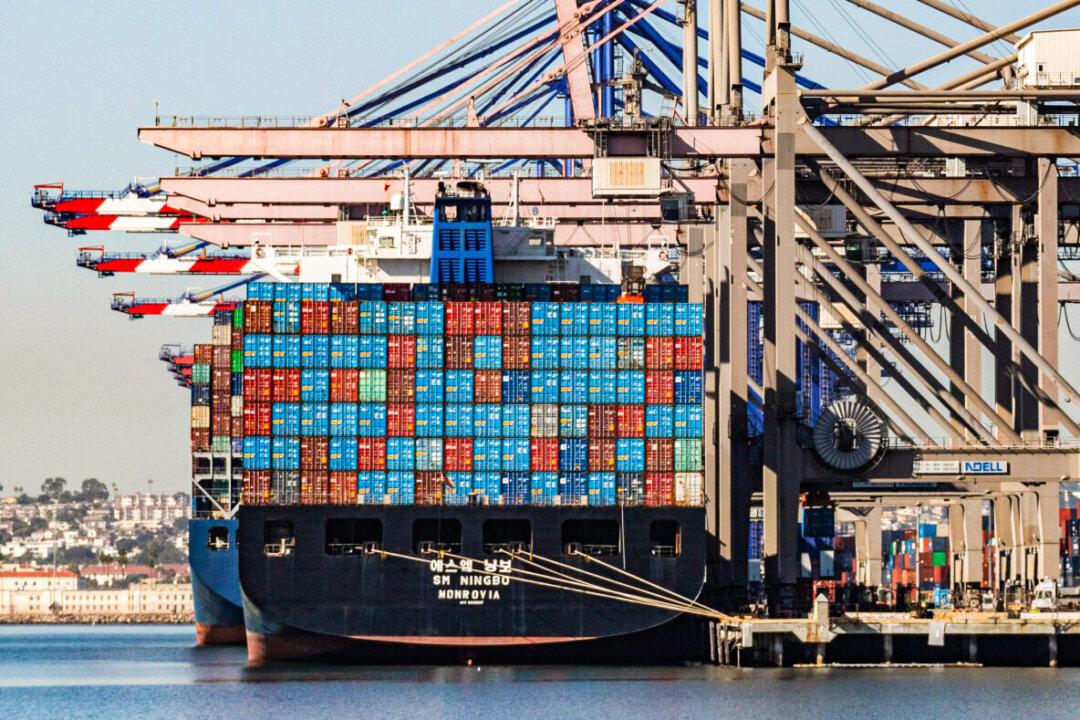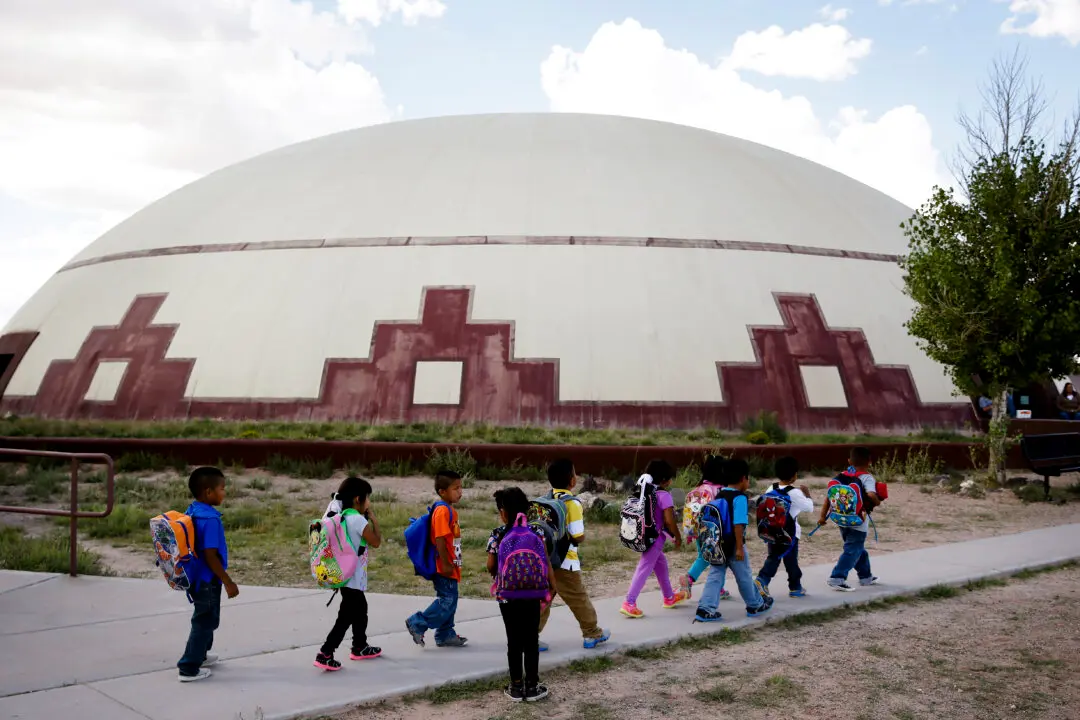The waters off the coast of Southern California continued to see record-breaking numbers of cargo ships this week as one city opened its harbor to help with the overflow.
The ports broke a new record on Nov. 9, with 168 ships waiting to unload goods. That included 55 ships drifting at sea, 48 at anchor, and 65 ships docked.





